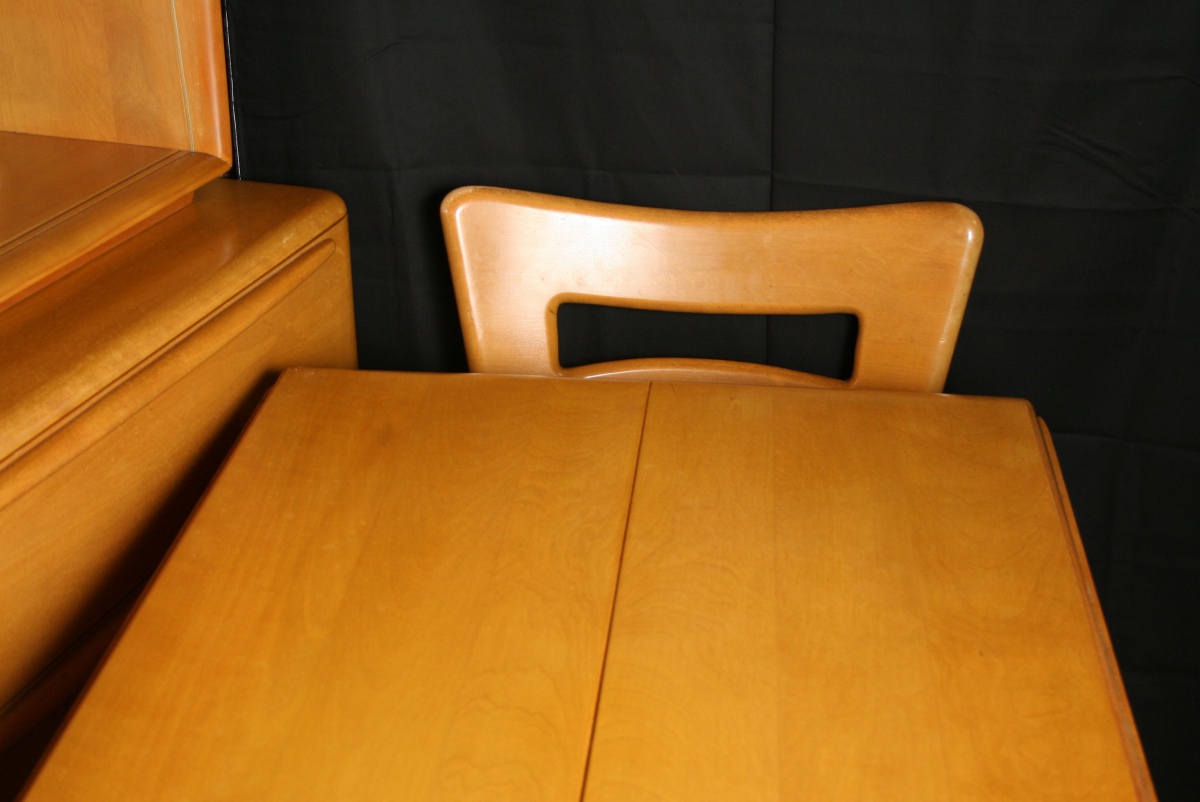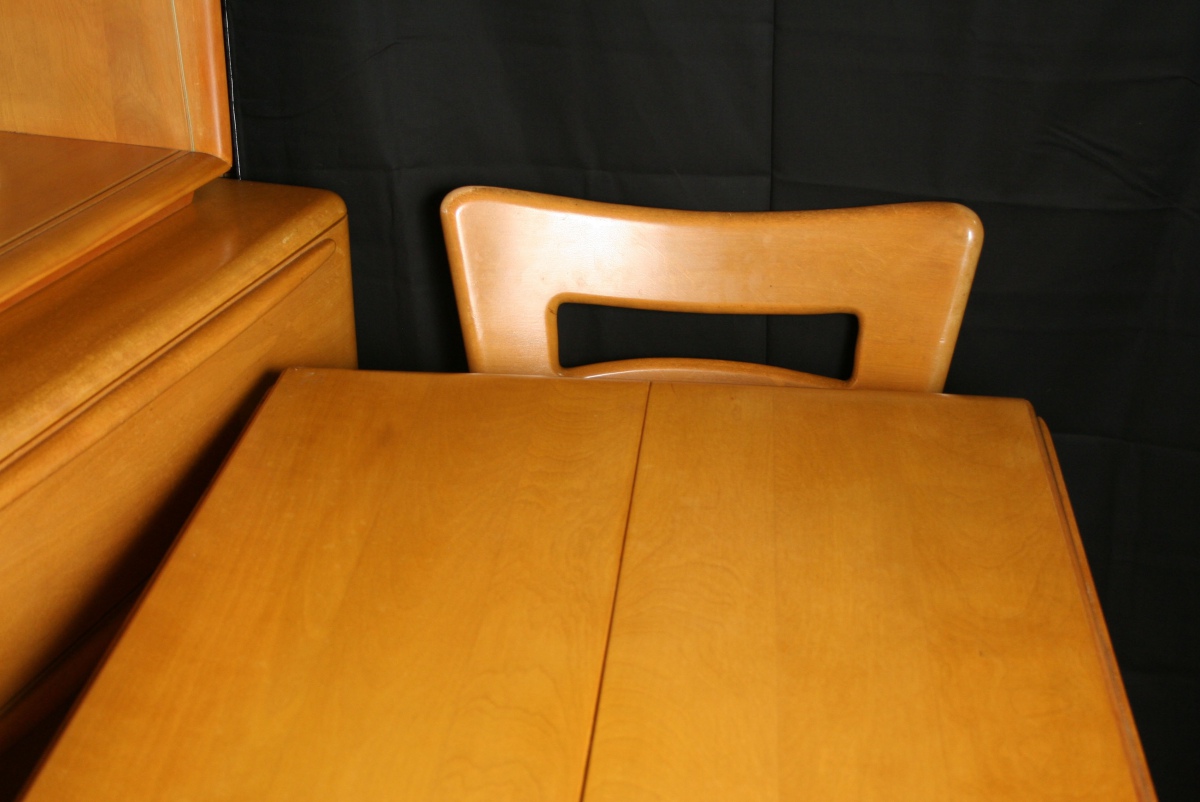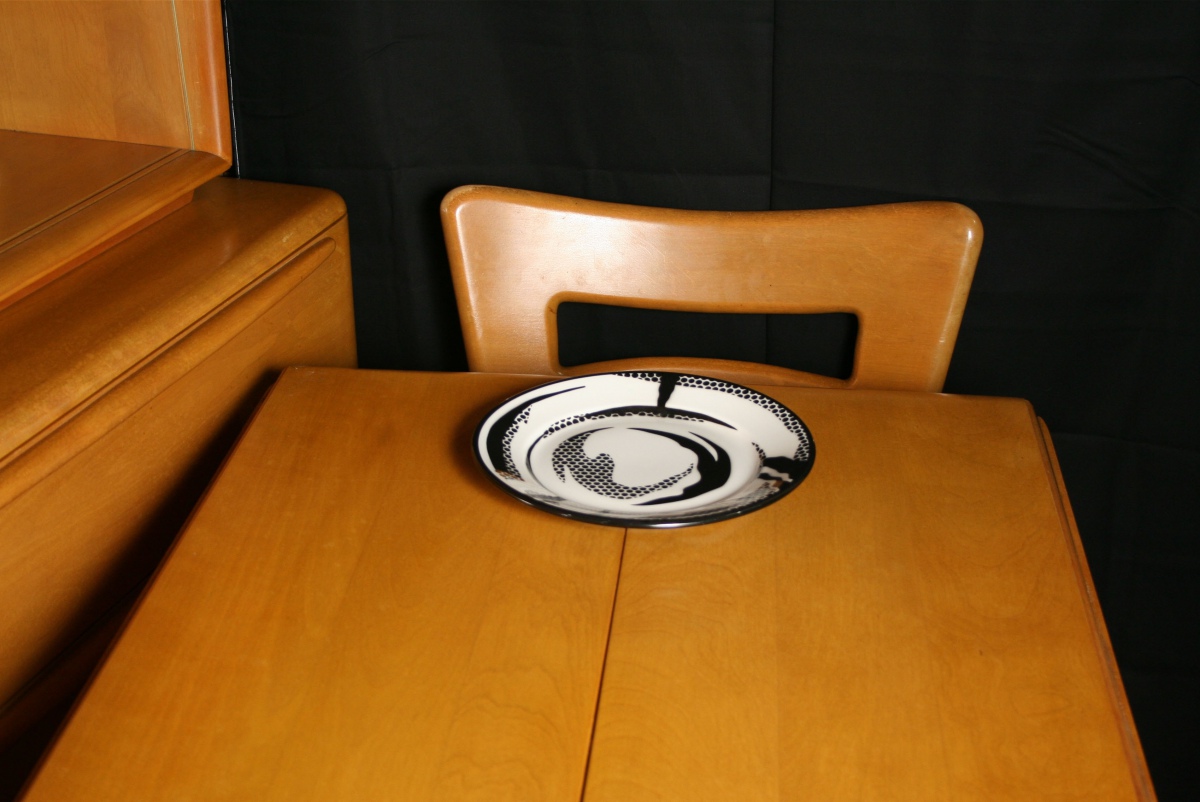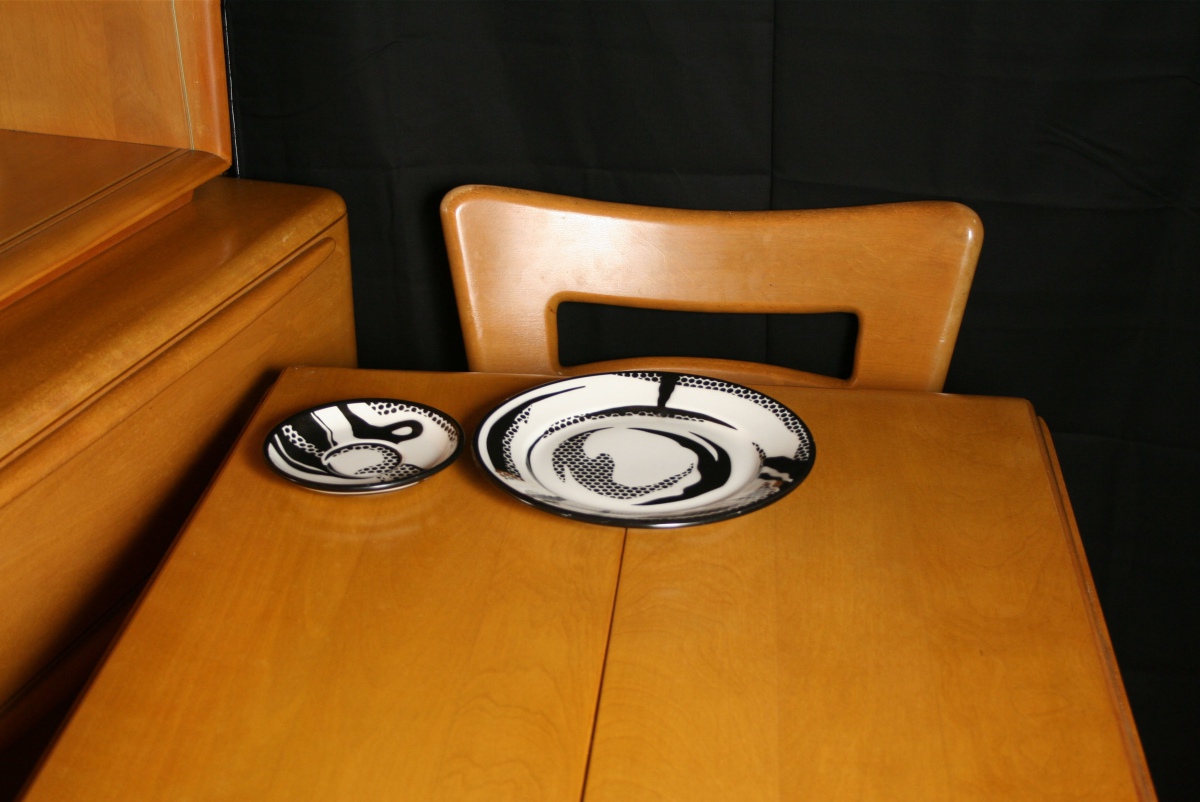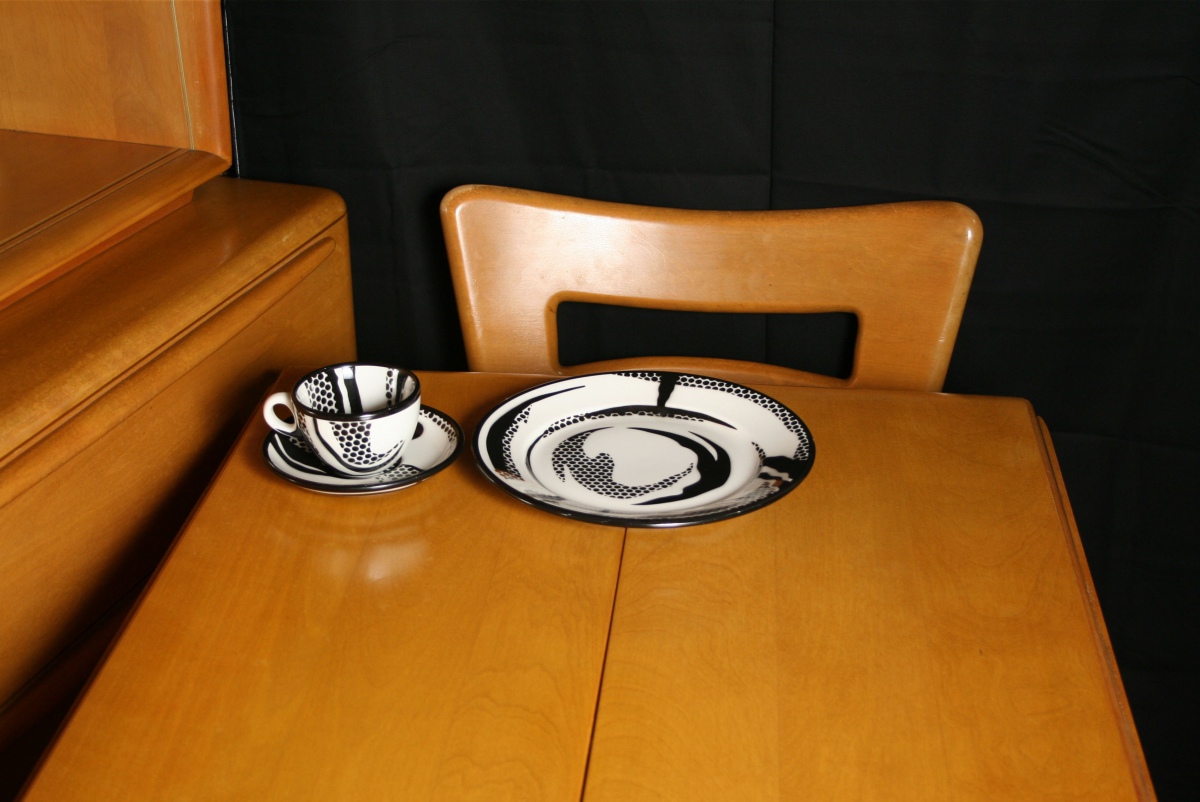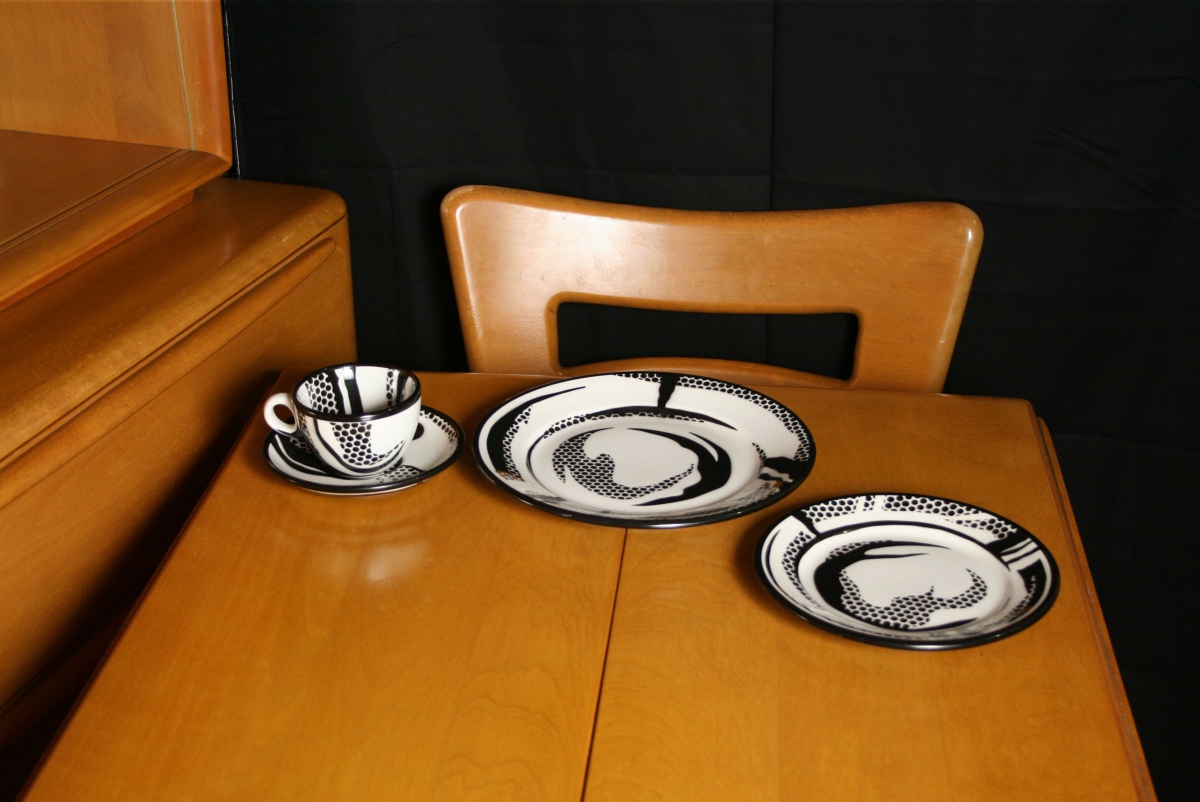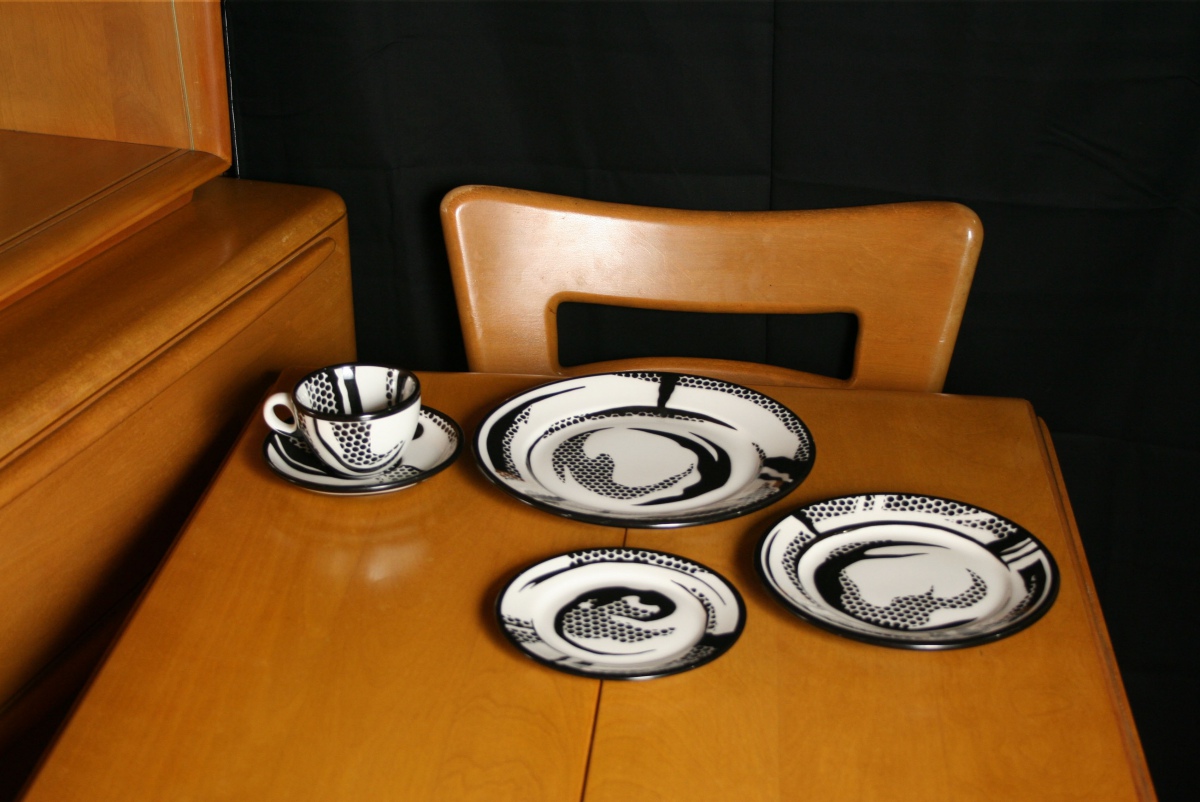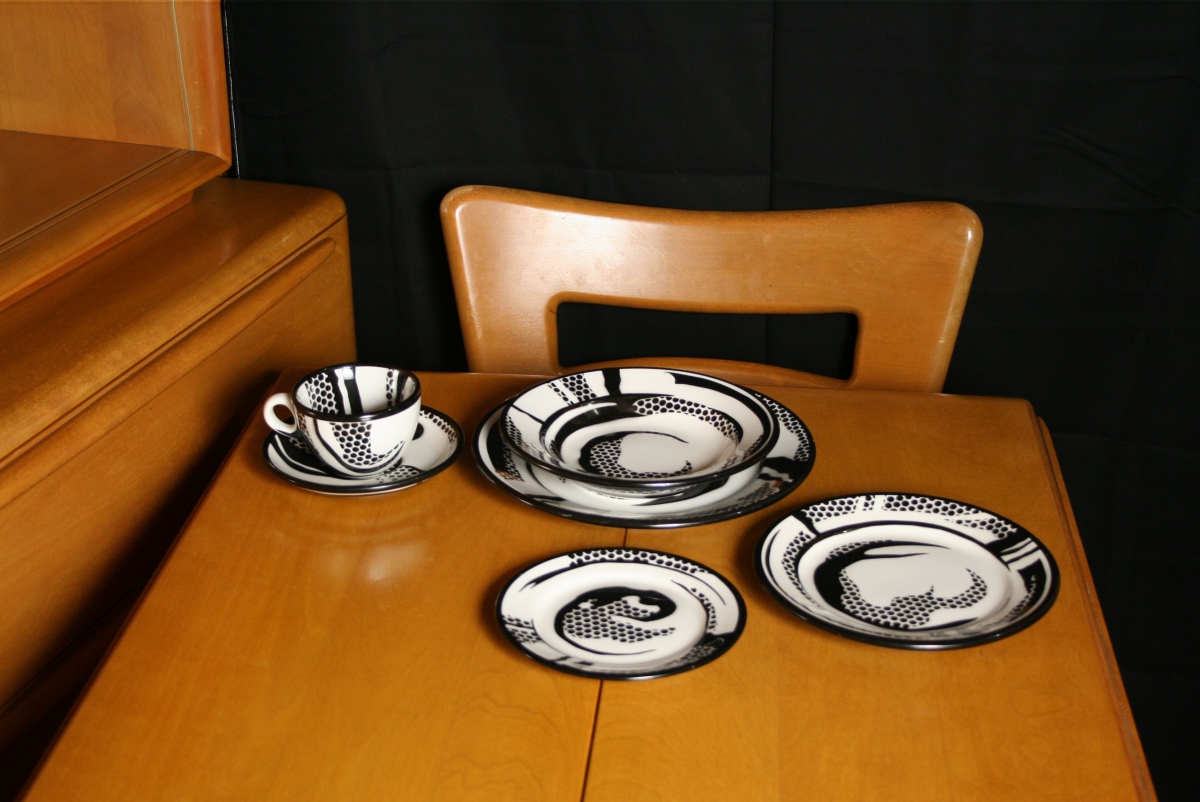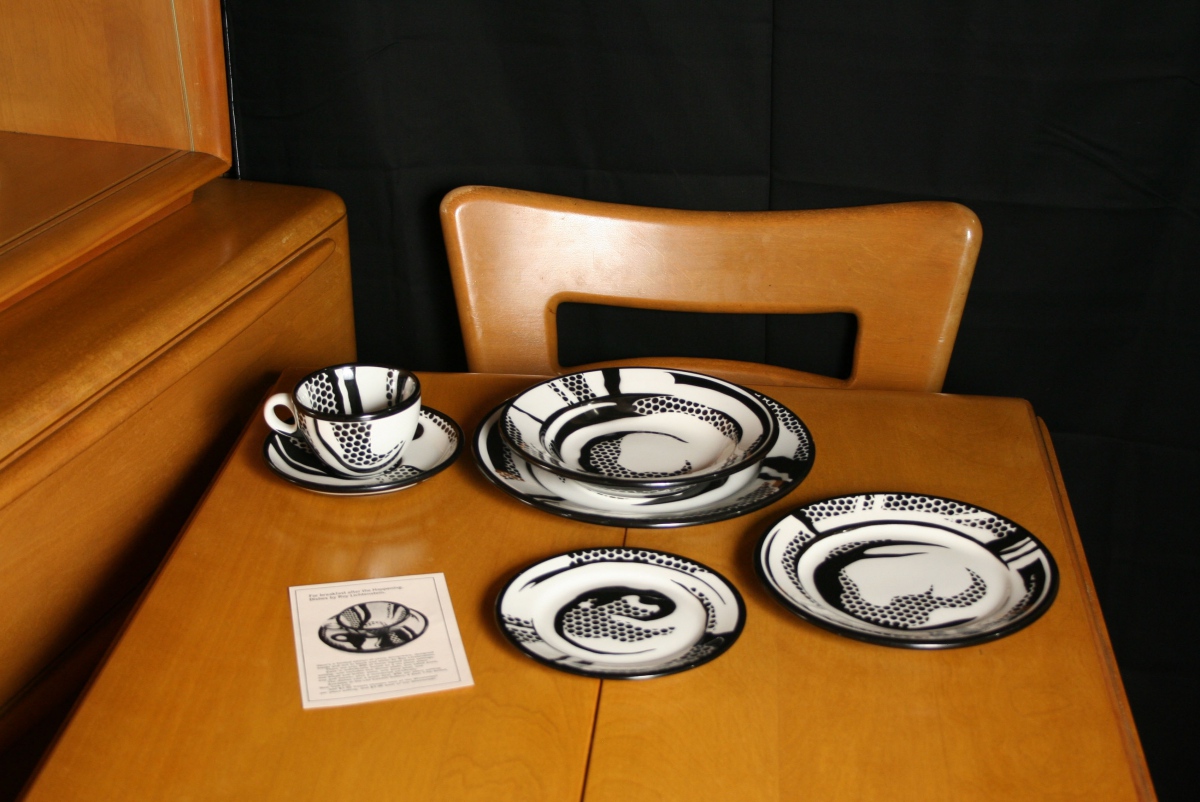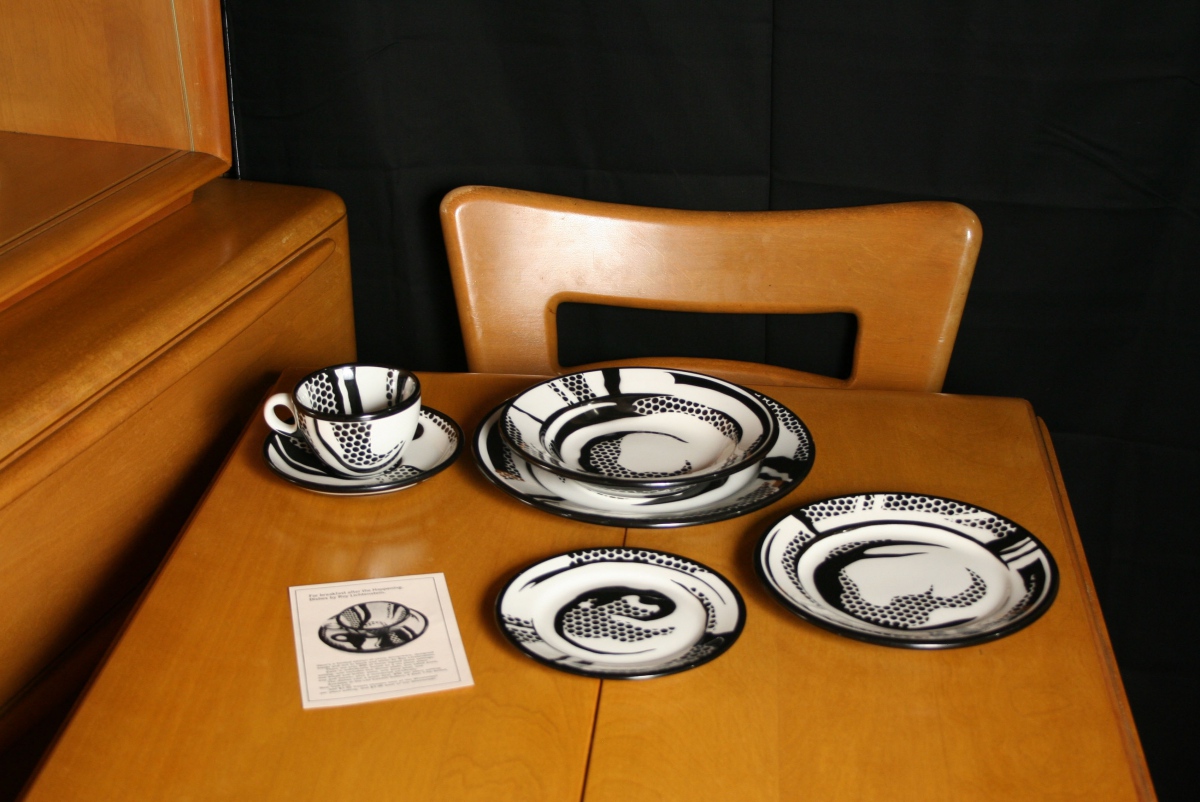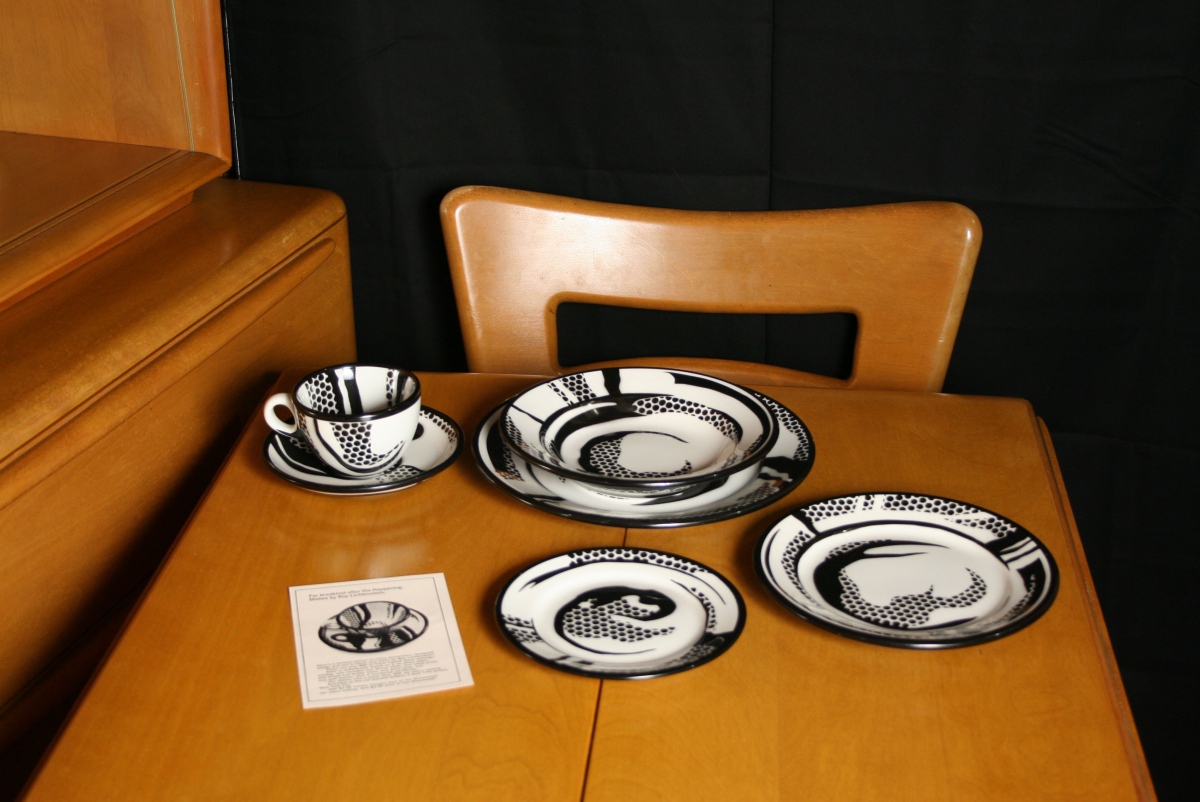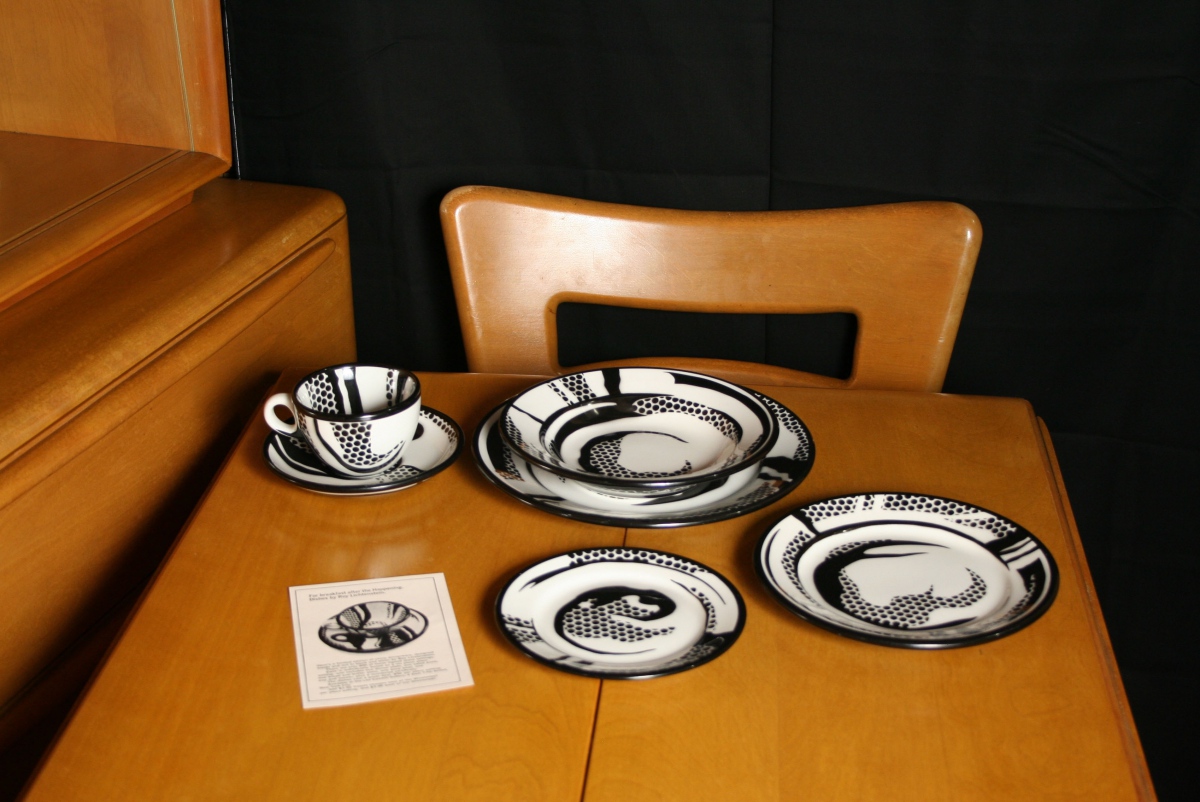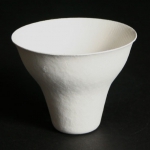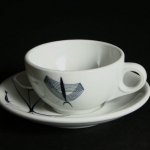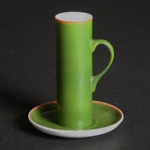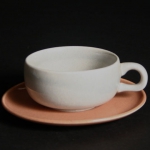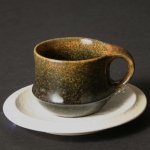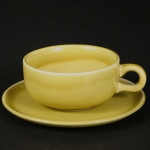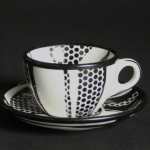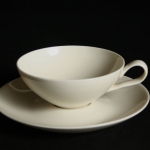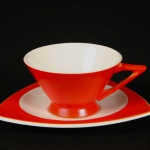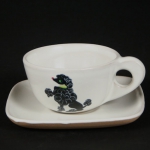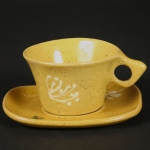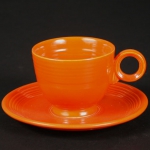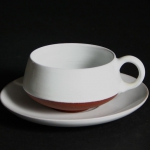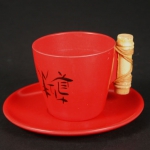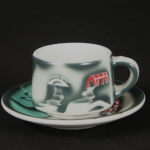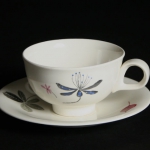Lichtenstein
[Previous] [Main Page] [Next]
One Table Oodles of Dishes:
Roy Lichtenstein
There are not many designers of dinnerware that can be described as American Pop artists. In fact, Roy Lichtenstein (American, 1923-1997) is the only one that immediately comes to mind. The Pop Art movement in the United States and United Kingdom emerged in the mid to late 1950s when artists such as Andy Warhol, Roy Lichtenstein, Jasper Johns, and Claes Oldenburg challenged the traditions of fine art by including imagery from popular culture in their creations. This imagery included commonplace mass-produced cultural objects from everyday life such as comic books and advertisements. Lichtenstein’s precise artworks were often inspired by comic strips while parodying popular culture at the same time. His work is instantly recognizable by his use of commercial imagery as well as his use on a large scale of the Ben-Day dots associated with newspapers and comic strips.
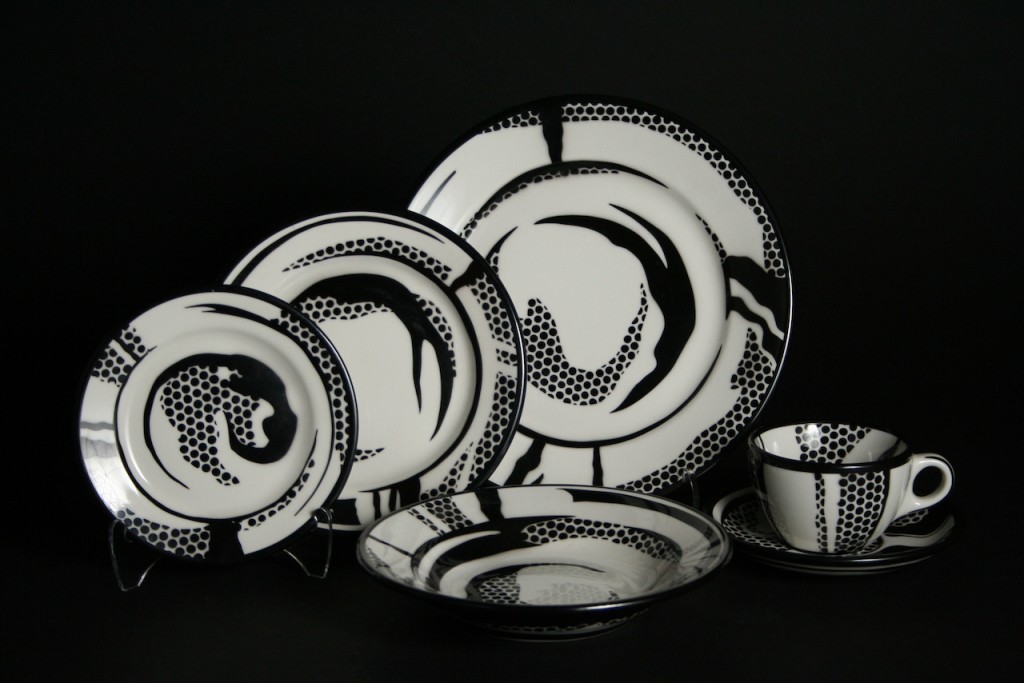
Roy Lichtenstein and ceramicist Ka Kwong Hui (1922-2003) met when they were both teaching at Douglass College at Rutgers University circa 1960-63. Their collaborations occurred in 1964 and 1965. Technical assistance was provided by Hui in 1965, when Roy created his ceramic mannequin head sculptures, and also when Lichtenstein created his crockery sculptures in 1965-66. Hui created the molds for these pieces and additionally developed the glazes and overglazes. When they were exhibited at Leo Castelli Gallery in New York in 1965, Jeff Schlanger described the year-long collaboration between Lichtenstein and Hui as “crockery castings from a series of cafeteria style commercial molds reassembled in precarious stacked and tipped positions and fired at cone 06 and sprayed overall with a white majolica glaze.” They have further been described as being made with “as much skill as wit.” (Slivka)
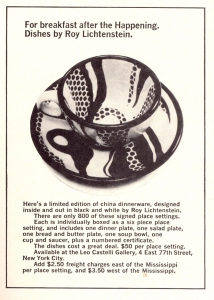 At the same time as these collaborations with Ka Kwong Hui, Roy Lichtenstein designed this limited edition black and white 6-piece place setting for Jackson China. The advertisement that appeared in Art in America the same year noted the set was “For breakfast after the Happening. Dishes by Roy Lichtenstein.” “Here’s a limited edition of china dinnerware, designed inside and out in black and white by Roy Lichtenstein. There are only 800 of these signed place settings. Each is individually boxed as a six-piece place setting, and includes one dinner plate, one salad plate, one bread and butter plate, one soup bowl, one cup and saucer, plus a numbered certificate. The dishes cost a great deal. $50 per place setting. Available at the Leo Castelli Gallery, 4 East 77th Street, New York City. Add $2.50 freight charges east of the Mississippi per place setting, and $3.50 west of the Mississippi.”
At the same time as these collaborations with Ka Kwong Hui, Roy Lichtenstein designed this limited edition black and white 6-piece place setting for Jackson China. The advertisement that appeared in Art in America the same year noted the set was “For breakfast after the Happening. Dishes by Roy Lichtenstein.” “Here’s a limited edition of china dinnerware, designed inside and out in black and white by Roy Lichtenstein. There are only 800 of these signed place settings. Each is individually boxed as a six-piece place setting, and includes one dinner plate, one salad plate, one bread and butter plate, one soup bowl, one cup and saucer, plus a numbered certificate. The dishes cost a great deal. $50 per place setting. Available at the Leo Castelli Gallery, 4 East 77th Street, New York City. Add $2.50 freight charges east of the Mississippi per place setting, and $3.50 west of the Mississippi.”
References: Ceramics Monthly, “Hui: beautiful garments worn on top of the piece,” by Margaret Carney, Vol. 53, No. 5, 2005, pp. 41-45; Craft Horizons, “Ceramics and Pop –Roy Lichtenstein,” by Jeff Schlanger, Vol. 26, January-February 1966, pp. 42-43; The East Hampton Star, “From The Studio,” by Rose C.S. Slivka, August 27, 1992, p. H-11.
essay by Margaret Carney

